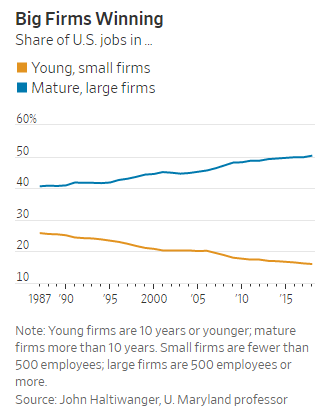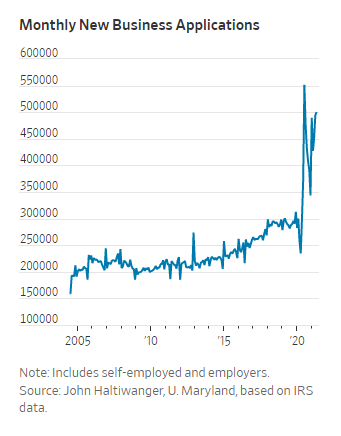(p. B1) The giant tech companies with their power-hungry, football-field-size data centers are not the environmental villains they are sometimes portrayed to be on social media and elsewhere.
Shutting off your Zoom camera or throttling your Netflix service to lower-definition viewing does not yield a big saving in energy use, contrary to what some people have claimed.
Even the predicted environmental impact of Bitcoin, which does require lots of computing firepower, has been considerably exaggerated by some researchers.
Those are the conclusions of a new analysis by Jonathan Koomey and Eric Masanet, two leading scientists in the field of technology, energy use and the environment. Mr. Koomey is now an independent analyst, and Mr. Masanet is a professor at the University of California, Santa Barbara. (Mr. Masanet receives research funding from Amazon.)
They said their analysis, published on Thursday [June 24, 2021] as a commentary article in Joule, a scientific journal, was not necessarily intended to be reassuring. Instead, they said, it is meant to inject a dose of reality into the public discussion of technology’s impact on the environment.
. . .
(p. B3) Exaggerated claims, the pair said, are often well-intentioned efforts by researchers who make what may seem like reasonable assumptions. But they are not familiar with fast-changing computer technology — processing, memory, storage and networks. In making predictions, they tend to underestimate the pace of energy-saving innovation and how the systems work.
. . .
Computer data centers are a case study. The biggest data centers, from which consumers and workers tap services and software over the internet, do consume huge amounts of electricity. These so-called cloud data centers are operated by companies including Alibaba, Amazon, Apple, Facebook, Google and Microsoft.
From 2010 to 2018, the data workloads hosted by the cloud data centers increased 2,600 percent and energy consumption increased 500 percent. But energy consumption for all data centers rose less than 10 percent.
What happened, the authors explain, was mainly a huge shift of workloads to the bigger, more efficient cloud data centers — and away from traditional computer centers, largely owned and run by non-tech companies.
In 2010, an estimated 79 percent of data center computing was done in traditional computer centers. By 2018, 89 percent of data center computing took place in cloud data centers.
“The big cloud providers displaced vastly less efficient corporate data centers,” Mr. Koomey said. “You have to look at the whole system and take substitution effects into account.”
The complexity, dynamism and unpredictability of technology development and markets, the authors say, make projecting out more than two or three years suspect. They critiqued a Bitcoin energy paper that projected out decades, based on what they said were old data and simplified assumptions — an approach Mr. Masanet called “extrapolate to Doomsday.”
For the full story, see:
Steve Lohr. “The Internet Is Eating Up Less Energy Than Expected.” The New York Times (Saturday, June 26, 2021): B1 & B3.
(Note: ellipses, and bracketed date, added.)
(Note: the online version of the story has the date June 24, 2021, and has the title “The Internet Eats Up Less Energy Than You Might Think.”)
The commentary summarized in the passages quoted above is:
Koomey, Jonathan, and Eric Masanet. “Does Not Compute: Avoiding Pitfalls Assessing the Internet’s Energy and Carbon Impacts.” Joule 5, no. 7 (July 21, 2021): 1625-28.



